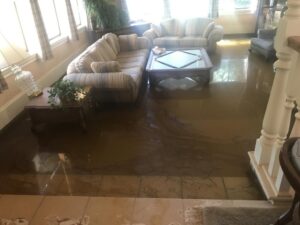
Water damage can be one of the most devastating occurrences for any property owner. It can cause significant structural damage, weaken the foundation of a building, and lead to mold growth and other health hazards. To minimize the damage and prevent future problems, it is essential to assess the extent of water damage and create a restoration plan in Little Rock AR.
Assessing the extent of water damage
The first step in assessing the extent of water damage is to identify the source of water intrusion. The source could be a burst pipe, a leaking roof, a faulty appliance, or natural disasters such as floods or storms. Once the source is identified, it is necessary to determine the extent of the water damage. The following are some of the signs of water damage:
- Stains on walls and ceilings: Water stains are often the first visible signs of water damage. They can be yellow, brown, or rust-colored and may appear in circular or irregular shapes.
- Musty odor: A musty smell is an indication of mold growth, which can occur within 24-48 hours after water intrusion.
- Buckled or warped floors: Water can cause wood floors to buckle or warp, and it can also damage other flooring materials such as carpet and vinyl.
- Peeling paint or wallpaper: Moisture can cause paint and wallpaper to peel off walls, indicating water damage.
- Mold growth: Mold can grow on any surface that has been exposed to moisture, including walls, ceilings, floors, and furniture.
Creating a restoration plan
After assessing the extent of water damage, the next step is to create a restoration plan. The restoration plan should include the following steps:
- Remove standing water: If there is standing water, it must be removed as soon as possible to prevent further damage. This can be done using pumps or wet vacuums.
- Dry out the affected area: After removing standing water, the affected area must be dried out completely. This can be done using dehumidifiers, fans, and other drying equipment.
- Remove damaged materials: Materials that are severely damaged or cannot be salvaged, such as wet insulation, drywall, and carpet, must be removed and disposed of properly.
- Clean and disinfect: The affected area must be cleaned and disinfected to prevent mold growth and other health hazards.
- Repair and restore: After cleaning and disinfecting, the damaged materials must be repaired or replaced, and the affected area must be restored to its pre-loss condition.
Conclusion
Assessing the extent of water damage and creating a restoration plan are critical steps in minimizing the damage caused by water intrusion. Property owners must act quickly to prevent further damage and ensure the safety of occupants. It is recommended to seek professional help from water damage restoration Little Rock companies who have the expertise and equipment to handle water damage restoration effectively.
Service Pro Restoration
900 S Shackleford Rd Little Rock AR, 72211
501-273-3030
